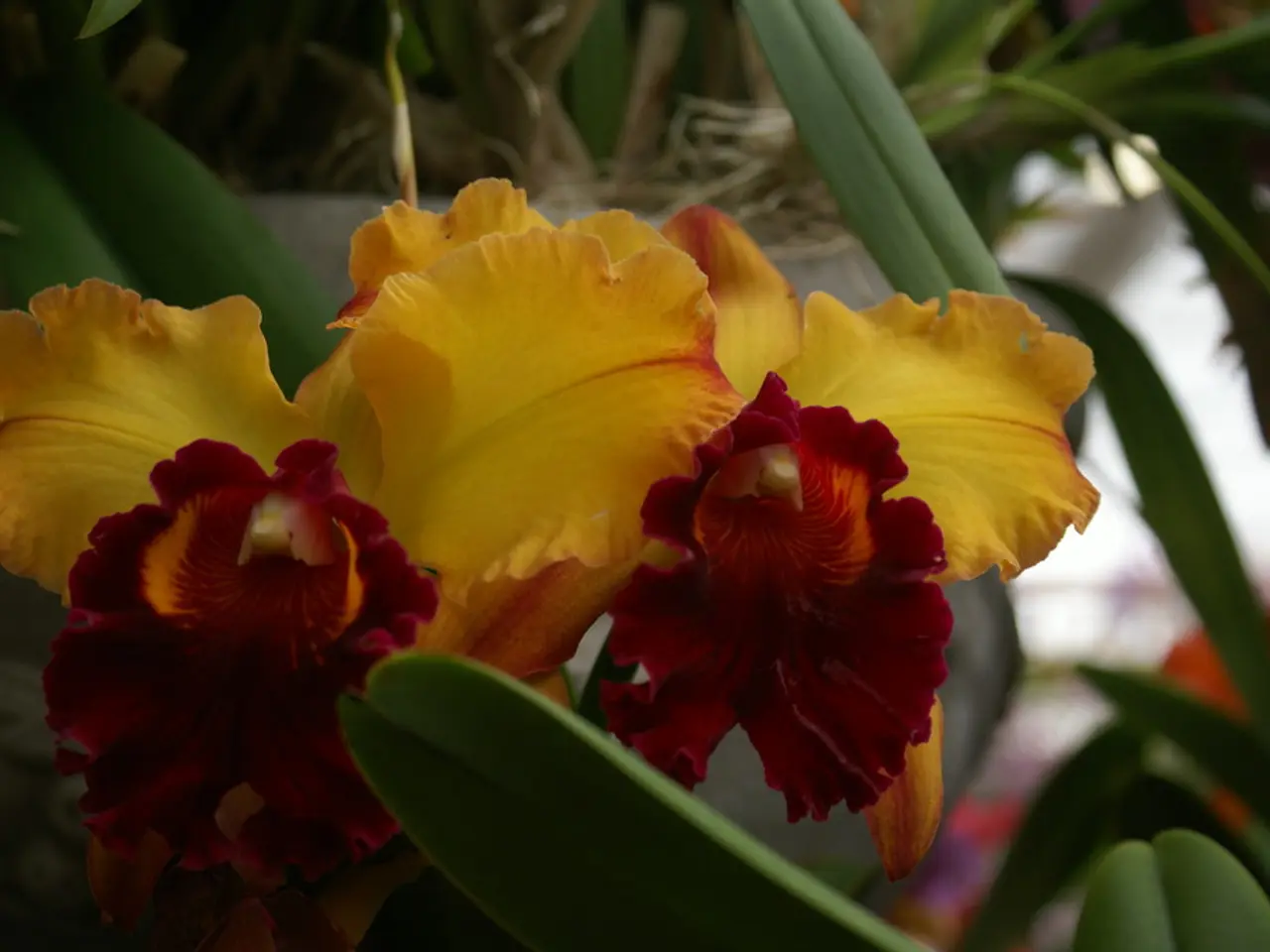Caring for Moses-in-the-Cradle Plant (Tradescantia Spathacea): Essential Guidelines
The Tradescantia spathacea, commonly known as Moses in the Cradle, is a popular choice among indoor gardeners who appreciate the vibrant purple hue of this plant. With its easy care requirements and slow growth rate, it's an ideal choice for those new to plant care or those with limited space.
Light ------------
Tradescantia spathacea prefers bright, indirect light to maintain its vibrant leaf color. While it can tolerate some direct sunlight, it's best to avoid intense midday sun, which may scorch the leaves.
Temperature ------------
This plant thrives in typical indoor temperatures, generally preferring warm conditions around 18–24°C (65–75°F). Protect it from cold drafts or temperatures below 10°C (50°F).
Water -----
Moderate watering is key for Tradescantia spathacea. Allow the top half of the soil to dry out between watering, and avoid waterlogging to prevent root rot.
Humidity --------
Tradescantia spathacea prefers medium humidity. Typical household humidity is usually sufficient, but if air is very dry, occasional misting can help.
Soil ----
A well-drained, light potting mix is ideal for Tradescantia spathacea. A mix enriched with organic matter and good drainage (such as sandy or loamy soil) is recommended. An alternative soil mix is equal parts universal potting mix, cactus soil, and perlite or vermiculite.
Fertilizer ----------
Feed your Tradescantia spathacea monthly during the growing season (spring through summer) with a balanced, water-soluble fertilizer diluted to half strength. Reduce feeding in fall and winter when growth slows.
Pruning -------
Pinch back or trim stems regularly to encourage fuller, bushier growth and prevent legginess. This helps promote more compact and healthy foliage.
Repotting ---------
Repot every 1–2 years or when root-bound, using fresh potting mix to maintain vigor. Choose a pot slightly larger than the current one with drainage holes.
Propagation ------------
Easily propagated by stem cuttings placed in soil or water, Tradescantia spathacea can be used to expand your plant collection. Seed propagation involves waiting for the seed pods to be brown and dried, then planting the seeds in a shallow container with a well-draining soil mix.
Common Problems ----------------
Watch for overwatering, which can cause root rot; yellowing leaves may indicate too much sun or poor watering habits. Tradescantia may cause mild irritation if ingested by pets, so keep it out of reach if you have cats or dogs.
Tradescantia spathacea has naturalized in Florida and Louisiana, and is listed as a Category II invasive exotic species. It's important to be aware of this if you live in these areas.
With these guidelines, you can maintain a healthy, vibrant Tradescantia spathacea with strong foliage and rich coloration. Regular attention to light, watering, and pruning are key to thriving plants.
Glen, a gardening expert with over 15 years of experience in garden maintenance, design, and landscaping services, offers the following advice: "Remember, every plant is unique, so observe your Tradescantia spathacea closely and adjust its care accordingly."
This Tradescantia spathacea, a popular choice for indoor gardeners, can also be appreciated in a home-and-garden setting. As it prefers bright, indirect light and a well-drained potting mix, careful consideration of its lifestyle within a home-and-garden environment is essential for maintaining its vibrant color and promoting healthy growth.




